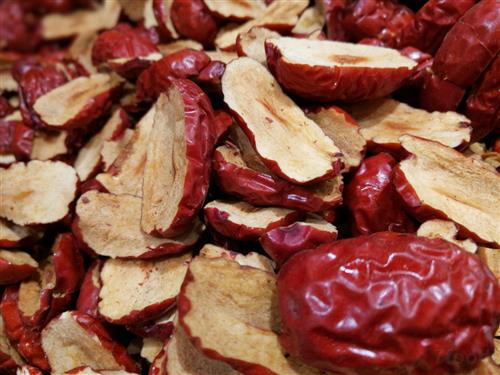The difference between gray dates and red dates
To say the difference between gray dates and red dates, many people do not understand, mainly because, most people are not familiar with gray dates. In our daily lives, red dates are often eaten, so most people are quite familiar with red dates, and they all know the medicinal value of red dates. But when it comes to gray dates, people in many areas are basically ignorant, and usually there are no ash dates in supermarkets. However, there are many differences between gray jujube and jujube, I believe that many people who have known and eaten gray jujube are aware of it. The difference between grey jujube and red jujube is not a lot of people guess, it is only a relatively large difference in appearance, in fact, The difference in the taste of gray dates and red dates is also great. So, what's the difference between gray dates and red dates? The gray jujube, also known as Ruo jujube, has a long obovate fruit and its peel is orange-red. Produced in Xinjiang, China. The gray jujube gets its name because if the jujube grows red before it matures, the whole body turns gray, like a layer of frost, so it is named "gray jujube." Ash date is an excellent fresh food and dry and dual-use type, especially suitable for processing into jujube. Plants are resistant to drought, thin and salty, resistant to hot and dry wind, early results, high yield, and stable yield. They are very promising varieties. However, it is less resistant to turtle wax and juvenile disease. Fruit traits: The fruit is long and obovate, and the axillary part is slightly fine and slightly skewed. The average fruit weight is 12.3 grams and the maximum fruit weight is 13.3 grams. The fruit shoulder is slanted, thinner and slightly raised. The stem is small and medium deep. The top of the fruit is round and the top is slightly concave. The fruit surface is smoother. The peel is orange-red, before the white mature stage, it turns from green to grey and enters the white mature stage from ash to white. The flesh is greenish-white, dense in texture, relatively brittle, with many sap, contains 30% of soluble solids, and has an edible rate of 97.3%. It is suitable for fresh food, dried and processed, and of superior quality. The dry rate is about 50%. Dried jujube flesh is dense and elastic, able to recover after being pressed, and resistant to storage and transportation. The nucleus is smaller, with a rate of 4% to 5%. In the area of ​​origin, it sprouted in mid-April, began to bloom in late May, and matured in mid-September. The fruit growth period is about 100 days. Jujube, also known as jujube, is the mature fruit of jujube tree, dried and dried by drying, drying or roasting. The peel is red to purple, and it has been listed as “Five Fruits†(Peach, Plum, Plum, etc.) since ancient times. One of apricot and date). According to historical records, jujube is a traditional Chinese specialty tree species native to China. Archaeologists have discovered fossils of jujube from the Xinwen Fei Ligang Cultural Site, proving that it is more than 8,000 years old in China. Jujube sweet and warm, returning to the spleen and stomach, there is a function of Bu Zhong Yi Qi, nourishing the nerves, soothing medicine; modern pharmacology found that red jujube contains protein, fat, sugar, organic acid, vitamin A, vitamin C, trace Calcium variety. Hemodialysis Catheter,dialysis Catheter,powertrialysis dialysis catheter,peritoneal dialysis catheter,dialysis catheter kit Anesthesia Medical Co., Ltd. , https://www.medicaldiverse.com
